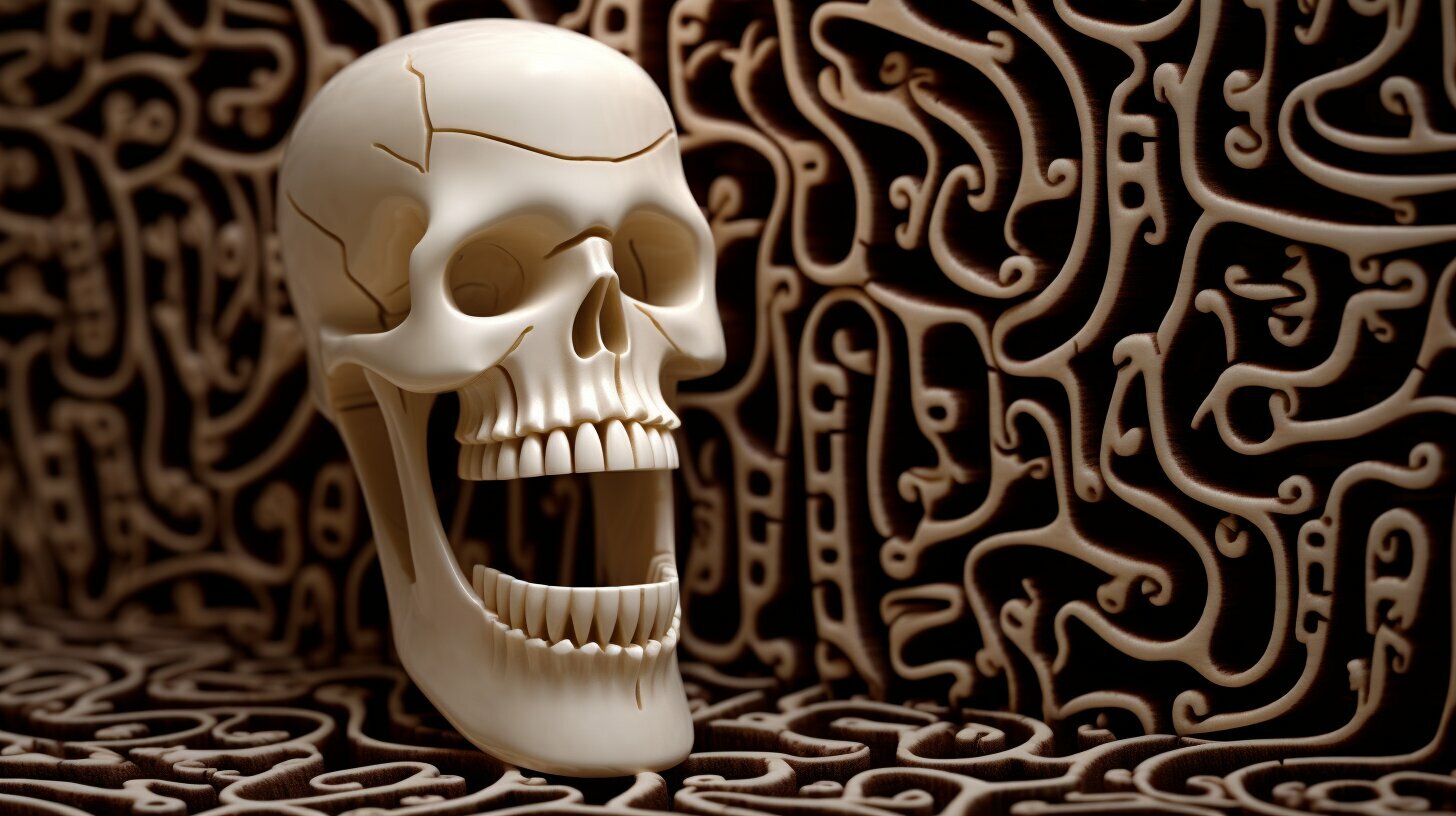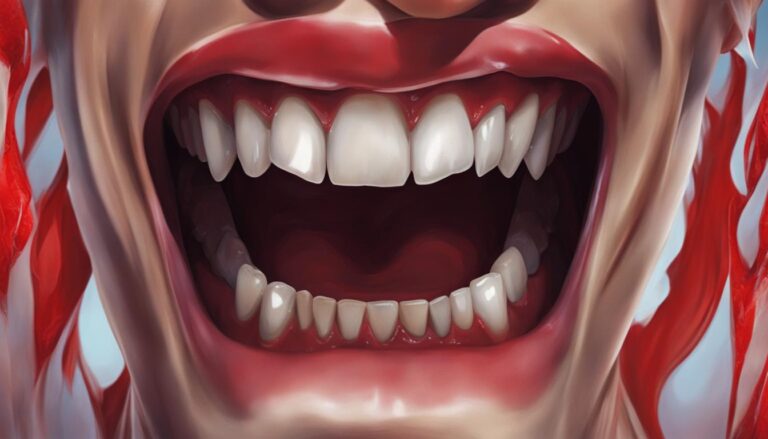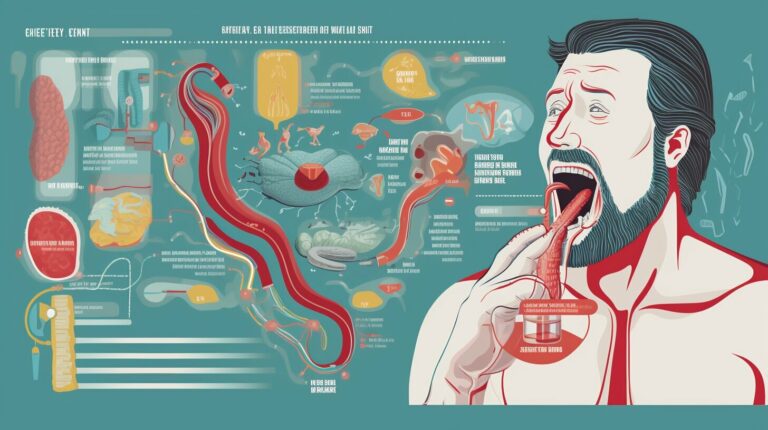Unraveling the Mystery: Why is it Called a Wisdom Tooth?
Have you ever wondered why these teeth are called wisdom teeth? Well, let’s dive into the intriguing history and etymology behind the name of these enigmatic dental companions.
Wisdom teeth, also known as third molars, typically make their appearance between the ages of 17 and 21. Traditionally, this period was associated with the acquisition of wisdom, hence the name. However, recent theories have challenged this notion, prompting us to reevaluate the timeline of their emergence.
Interestingly, wisdom teeth are considered vestigial, meaning they are not essential for proper bodily functioning. Despite their lack of necessity, these teeth often cause a range of problems including infection, impaction, tooth crowding, and pain. So why do we still have them?
One possible explanation lies in the evolutionary changes in our diet and jaw size over time. In the past, humans had larger jaws and consumed harder, tougher foods that required more chewing. As our diet and dental care improved, the need for wisdom teeth decreased. However, our jaws and teeth did not proportionally adapt to these changes, leading to issues with wisdom teeth eruption.
Surgical removal of wisdom teeth may be necessary to prevent discomfort, infections, and misalignments. Understanding the evolutionary changes in our jaws and teeth helps shed light on the connection between our dietary habits, dental health, and the challenges posed by wisdom teeth.
Key Takeaways:
- Wisdom teeth are named because they typically emerge during the age when people were traditionally thought to gain wisdom.
- Recent theories suggest that the traditional timeframe for wisdom teeth eruption may need to be reconsidered.
- Wisdom teeth are considered vestigial and not necessary for proper functioning of the human body.
- They often cause problems such as infection, impaction, tooth crowding, and pain.
- Changes in diet and jaw size over time may explain the prevalence of problematic wisdom teeth.
Bursting with Wisdom: The Traditional Explanation
According to traditional belief, wisdom teeth earned their name due to their emergence during a time when individuals were believed to acquire wisdom. These mysterious molars typically make their appearance between the ages of 17 and 21, marking a period in life when people were thought to embark on a journey of intellectual growth and maturity. Like a rite of passage, the arrival of wisdom teeth became synonymous with gaining insights and knowledge.
The association between wisdom teeth and wisdom may seem amusing to us now, but it reflects a time when ancient cultures attributed deeper meaning to physical changes in the body. These teeth, often considered the final set of molars to grow, were conveniently named to align with the prevailing belief that they correlated with the acquisition of wisdom and maturity.
While this traditional explanation offered a charming narrative, it’s essential to note that recent studies have challenged the accuracy of the timeline associated with wisdom teeth eruption. Modern theories propose that the emergence of these molars may not necessarily coincide with the acquisition of wisdom as was previously believed. This realization invites us to reconsider the origin of their name and explore the fascinating complexities surrounding wisdom teeth.
| Traditional Explanation: | Wisdom teeth emerge during the age of acquiring wisdom |
|---|---|
| Recent Findings: | Wisdom teeth may not necessarily erupt during the age of gaining wisdom |
As we peel back the layers of this dental mystery, we begin to unravel the deeper significance of wisdom teeth. Far from being mere remnants of our evolutionary past, these molars continue to pose challenges and complications. In the following sections, we will explore the vestigial nature of wisdom teeth, their impact on dental health, and the evolutionary changes that have led to their prevalence in modern society.
Rethinking the Timeline: Challenges to the Traditional Theory
Recent theories suggest that the age range traditionally associated with the eruption of wisdom teeth may not be entirely accurate. These teeth, also known as third molars, have long been believed to emerge between the ages of 17 and 21, a time when people were thought to gain wisdom. However, as our understanding of dental development deepens, it becomes evident that this timeline may need to be reassessed.
Scientists and dental experts are beginning to question the notion that wisdom teeth always erupt during the late teenage years. Some studies propose that genetic and environmental factors, such as diet and jaw size, play a significant role in the eruption pattern of wisdom teeth. These factors may cause variations in the development and eruption of these teeth, challenging the traditional theory.
Additionally, research indicates that the prevalence of problematic wisdom teeth may be influenced by changes in diet and jaw size over time. In the past, humans had larger jaws and consumed harder, tougher foods that required more chewing. As our diets changed and dental care improved, the need for wisdom teeth decreased. However, the size of our jaws and teeth did not proportionally adapt, leading to difficulties with the eruption process.
| Wisdom Tooth Terminology | Description |
|---|---|
| Impaction | When a wisdom tooth does not fully emerge or remains trapped beneath the gum line. |
| Tooth crowding | The displacement or shifting of other teeth caused by insufficient space for incoming wisdom teeth. |
| Infection | Bacterial growth and inflammation often resulting from wisdom tooth impaction or decay. |
| Pain | Discomfort or soreness experienced due to the pressure of an erupting or impacted wisdom tooth. |
In some cases, wisdom teeth can cause various problems, including impaction, tooth crowding, infection, and pain. Surgical removal of these teeth may be necessary to avoid discomfort, infections, and misalignments. By understanding the evolutionary changes in our jaws and teeth, we can better comprehend the connection between our dietary habits, dental health, and the challenges posed by wisdom teeth.
Vestiges of the Past: Understanding the Functionality of Wisdom Teeth
Wisdom teeth are considered third molars, but their functionality is no longer crucial for our well-being. These teeth, which typically emerge between the ages of 17 and 21, are relics from a time when our ancestors had larger jaws and consumed harder, tougher foods that required more chewing. Back then, wisdom teeth played a vital role in grinding down food particles and aiding digestion. However, as our diet has evolved and dental care has improved, the need for these extra molars has diminished.
As we adapted to eating softer, processed foods, our jaws and teeth did not keep pace with these changes. Our jaws became smaller, and our teeth now struggle to find enough space to emerge properly. This misalignment commonly leads to a variety of issues, including infection, impaction, tooth crowding, and pain. It’s no wonder that many people opt for surgical removal of their wisdom teeth to prevent these complications and maintain optimal dental health.
The functionality of wisdom teeth is further questioned by the fact that they are often impacted, meaning they do not fully emerge from the gums. This can result in painful swelling, infection, and damage to adjacent teeth. In some cases, the impacted wisdom teeth may remain hidden beneath the gumline, causing no immediate problems but remaining a potential source of future issues.
While the name “wisdom teeth” may have originated from the belief that they emerge during a time of increased wisdom, we now understand that their significance lies more in their vestigial nature rather than any inherent wisdom they bestow. By examining the evolutionary changes in our jaws and teeth, we gain insight into the connection between our dietary habits, dental health, and the challenges posed by these often troublesome third molars.
Evolutionary Changes: The Impact of Diet and Jaw Size
With changes in diet and jaw size over the years, the emergence of wisdom teeth has become more problematic. In the past, humans had larger jaws and consumed harder, tougher foods that required extensive chewing. This constant chewing action helped wear down the teeth, including the third molars or wisdom teeth, which were once essential for processing such a diet. However, as our dietary habits evolved and our jaws gradually became smaller, the need for these extra teeth diminished.
As our diets shifted towards softer, processed foods, our jaws and teeth did not adapt proportional to these changes. While our jaws became smaller, our wisdom teeth did not follow suit, leading to issues with their eruption. As a result, many individuals experience problems such as impacted wisdom teeth, tooth crowding, and infections.
| Problematic Wisdom Teeth | Common Complications |
|---|---|
| Impaction | Wisdom teeth may not fully erupt due to lack of space, causing pain and swelling. |
| Tooth Crowding | Wisdom teeth can push against adjacent teeth, causing misalignment and overcrowding. |
| Infection | Partially erupted wisdom teeth can be difficult to clean properly, leading to infections and gum disease. |
| Pain | The pressure and inflammation caused by wisdom teeth can result in jaw pain and headaches. |
To alleviate these issues, surgical removal of wisdom teeth is often recommended. This extraction is a preventive measure to avoid discomfort, infections, and misalignments. By understanding the evolutionary changes in our jaws and teeth, we gain insights into why wisdom teeth pose challenges in modern times. As we continue to improve our dental care practices and our diets undergo further changes, it is essential to adapt and ensure the well-being of our oral health.
Wisdom Teeth Woes: Common Problems and Complications
The eruption of wisdom teeth often leads to a host of problems, including infection, impaction, tooth crowding, and pain. These troublesome teeth, also known as third molars, are notorious for causing discomfort and wreaking havoc in our mouths. But fear not, for I have gathered all the wisdom you need to understand these dental woes.
Let’s start with impaction, a common issue that occurs when there isn’t enough space in the mouth for the wisdom teeth to fully emerge. This can result in the teeth getting stuck below the gum line, causing pain and swelling. In severe cases, impaction can even lead to infections. If you find yourself experiencing these symptoms, it may be time to consider wisdom tooth removal.
But it’s not just impaction that can cause trouble. Wisdom teeth can also lead to tooth crowding, as they push and shift the adjacent teeth to make room for themselves. This can disrupt the harmony of your smile and potentially require orthodontic treatments to realign your teeth.
| Common Problems with Wisdom Teeth | Troublesome Symptoms |
|---|---|
| Infection | Pain, swelling, and redness in the gums |
| Impaction | Pain, swelling, and difficulty opening the mouth |
| Tooth Crowding | Crooked or overlapping teeth |
| Pain | Throbbing or sharp pain in the back of the mouth |
Lastly, let’s not forget about the encompassing pain that can accompany wisdom teeth eruption. As these teeth try to make their way into your already crowded mouth, they can cause discomfort and soreness. In some cases, the pain can become unbearable and interfere with your daily activities. Don’t suffer in silence; reach out to your dental professional to explore treatment options.
Now that you’re armed with knowledge about the problems and complications that wisdom teeth can bring, it’s important to listen to your body and seek professional advice when necessary. Remember, prevention is better than cure, so regular dental check-ups and discussions about your wisdom teeth with your dentist can help you stay ahead of any potential issues.
Dental Evolution: Adapting to Modern Lifestyles
As dental care and dietary habits improve, the need for wisdom teeth has decreased, but our jaws and teeth haven’t adapted accordingly. In the past, humans had larger jaws and ate harder, tougher foods that required more chewing. But as our diets have evolved and dental care has advanced, the role of wisdom teeth in our mouths has become more problematic.
Our jaws have become smaller over time, making it difficult for wisdom teeth to fit properly in the modern mouth. This mismatch between our jaw size and the size of our teeth often leads to impaction, crowding, and other dental complications. It’s like trying to fit a square peg into a round hole – it just doesn’t work.
In addition to jaw size, changes in our diet have also contributed to the challenges posed by wisdom teeth. Our ancestors consumed a diet that consisted of tough, fibrous foods that required more chewing. This constant chewing helped wear down teeth and prevent overcrowding. However, as our diets have shifted to softer, processed foods, the need for strong, durable teeth and the wisdom teeth that helped with chewing has diminished.
| Evolutionary Changes | Effects on Wisdom Teeth |
|---|---|
| Smaller jaws | Difficulty accommodating wisdom teeth |
| Shift in diet to softer foods | Reduced need for wisdom teeth and increased risk of impaction |
So, what does this mean for our dental health? It means that wisdom teeth often cause more harm than good in our modern mouths. Many people experience pain, infections, and misalignments due to these third molars. In some cases, surgical removal of wisdom teeth becomes necessary to prevent further complications.
Understanding the evolutionary changes in our jaws and teeth helps us make sense of the challenges posed by wisdom teeth. It highlights the connection between our dietary habits, dental health, and the need for intervention when it comes to these troublesome molars. As we continue to evolve and improve our dental care practices, it’s important to consider the impact on our wisdom teeth and how best to manage their presence in our mouths.
Conclusion
Exploring the naming and significance of wisdom teeth reveals the historical context and evolutionary challenges associated with these fascinating dental features.
Wisdom teeth, also known as third molars, were named because they typically emerge between the ages of 17 and 21, a time when people were believed to gain wisdom. However, new theories challenge this traditional timeframe, suggesting that the naming may need to be reevaluated.
These teeth are now considered vestigial, meaning they are not necessary for the proper functioning of the human body. In fact, wisdom teeth often cause a range of problems, including infection, impaction, tooth crowding, and pain. This prevalence of problematic wisdom teeth may be attributed to changes in diet and jaw size over time.
In the past, humans had larger jaws and ate harder, tougher foods that required more chewing. As our diet and dental care improved, the need for wisdom teeth decreased. However, our jaws and teeth did not proportionally adapt to these changes, resulting in issues with wisdom teeth eruption.
Surgical removal of wisdom teeth may be necessary to prevent discomfort, infections, and misalignments. By understanding the evolutionary changes in our jaws and teeth, we can better appreciate the connection between our dietary habits, dental health, and the challenges posed by wisdom teeth.
FAQ
Why are they called wisdom teeth?
The name “wisdom teeth” originated from the traditional belief that they emerge during the age when people were thought to gain wisdom.
Are wisdom teeth necessary for proper functioning of the human body?
No, wisdom teeth are considered vestigial and not necessary for proper functioning of the human body.
Why do wisdom teeth often cause problems?
Wisdom teeth can cause problems such as infection, impaction, tooth crowding, and pain due to their improper eruption or lack of space in the mouth.
Has the prevalence of problematic wisdom teeth changed over time?
Yes, changes in diet and jaw size over time have contributed to the increased prevalence of problematic wisdom teeth.
When should wisdom teeth be surgically removed?
Surgical removal of wisdom teeth may be necessary to prevent discomfort, infections, and misalignments.
How do diet and dental care impact the need for wisdom teeth?
As diet and dental care improved, the need for wisdom teeth decreased. However, the size of our jaws and teeth did not change proportionally, leading to issues with their eruption.
What are the common problems and complications associated with wisdom teeth?
Common problems and complications include infection, impaction, tooth crowding, and pain.
How have our jaws and teeth adapted to modern lifestyles?
Our jaws and teeth have not proportionally adapted to dental care advancements and dietary changes, leading to issues with wisdom teeth.






